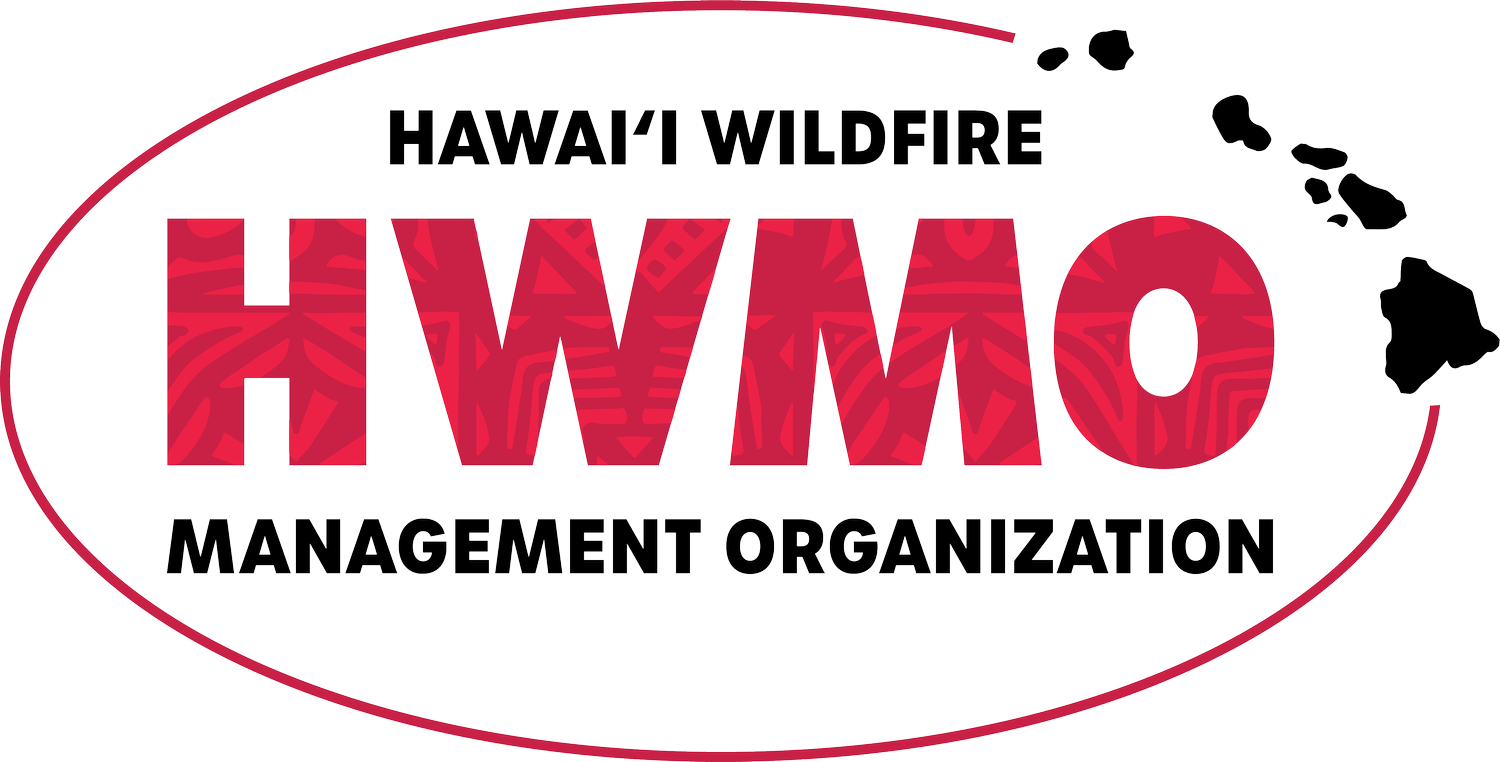Hawaii Wildfire hits the front pages again. Read about how the upcoming wildfire preparedness workshops will prepare you far in advance of a wildfire occurring in your area.
From the Source:
"Heavy brush resulting from recent rains, followed by abnormal dryness, has created the ideal conditions for wildfire, and a Waimea-based nonprofit is urging residents to take precautions before the threat occurs.
Inside the Ocean View Community Center Monday evening, the Hawaii Wildfire Management Organization shared details from its latest wildland fire action guide, with hopes of getting the public to prepare and remember its message of “Ready, Set, Go!” This was the first in a series of hour-long workshops, happening now through Aug. 6 islandwide.
Fire season in Hawaii is a year-round reality, said Elizabeth Pickett, the organization’s executive director. Fires have increased in size, frequency and intensity on all islands over the years, particularly as towns expand into formerly undeveloped places and areas of fallow, invasive or unmanaged vegetation, and as human-caused fires, such as roadside ignitions, have increased.
Pickett also explained how nonnative, fire-adapted vegetation has rapidly spread, not just through wildland landscapes, but also in communities. She said these nonnative grasslands and shrubs now cover nearly a quarter of Hawaii’s total land area, and together with a warming, drying climate, greatly increase fire incidence.
Over the past decade, firefighters statewide battled more than 900 wildland fire ignitions, which burned more than 17,000 acres, each year. In recent years, large fires have occurred in North and South Kohala, North and South Kona, and Ka‘u. Such large fires — those more than 100 acres — are not a novelty, especially when considering data from the Pacific Fire Exchange which shows a steady increase over the past 50 years, Pickett said.
Increases in wildfire pose threats not just to human safety and infrastructure, but also agriculture, native ecosystems, cultural resources, watershed function and nearshore coastal resources, she added.
Hawaii Wildfire Management Organization collected fire records from all the fire response agencies in Hawaii, including the four county fire departments, the state Division of Forestry and Wildlife and Hawaii Volcanoes National Park. Department of Defense records were not included because they’re classified for security reasons.
After making the records mapable and compatible, as well as logging the more than 13,500 fires in a database, the nonprofit was able to find trends and patterns of wildfire ignitions on the main Hawaii Islands. The result: “It’s really a lot of roadside ignitions,” Pickett said. “These maps have been a really good communication tool to get some of our decision-makers’ attention about fire prevention needing to be ramped up in regards to wildfire.”
During Monday’s meeting, officials mentioned how studies have shown that as many as 80 percent of the homes lost in wildland fires could have been saved if owners had done a few fire-safe practices. The new wildland action guide, called “Ready, Set, Go!,” offers Hawaii-specific information on how to prepare for wildland fire threat, have “situational awareness” during a fire, and how to leave safely.
Pickett said “Ready, Set, Go!” is the result of a nationwide discussion in the fire service on how to best protect homes, lives and resources in the wildland-urban interface, where development borders a natural area and the ember zone, which is an area where the embers from a wind-driven wildfire can ignite homes.
Pickett claimed the program had its roots in Australia’s “Stay and Defend” wildfire plan, which fire officials in the U.S. objected to because it might cause resources to be diverted from protecting structures to rescuing residents in fire areas. They also thought the risks inherent in not evacuating in advance of a wildfire outweighed any potential benefit.
The guide focuses on building defensible space around homes and structures, sharing materials that can make homes more firesafe, and revealing the impacts caused by wildland fire. It also offers checklists for residents, large landowners and land managers.
Hawaii Wildfire Management Organization began in 2000 and was incorporated two years later by various stakeholders, with the goal of characterizing wildfire threats and developing mitigation strategies. “Meant to be proactive and collaborative,” this nonprofit is “always in cahoots” with its partners, including the Pacific Fire Exchange, state Division of Forestry and Wildlife, University of Hawaii’s College of Tropical Agriculture and Human Resources, fire departments, and Civil Defense. The organization supplements and complements with activities already on the ground by doing projects that fit its partners’ needs, Pickett said.
Such projects include: building fuel breaks, putting in infrastructure like dip tanks, water troughs, fittings and adapters, holding workshops on making landscaping fire-wise and best management practices, and doing outreach. The organization also helps create community wildfire protection plans for free and has produced wildfire hazard assessments, which educate residents about the low, moderate and high hazards pertaining to 36 different criteria like ignition risk and water availability in their area.
The latest wildland fire action guide was one of the projects made possible through a $300,000 grant from the U.S. Forest Service, Pickett said.
The other workshops for “Ready, Set, Go!,” beginning at 6 p.m., are tonight at Waikoloa Community Association’s community room, Friday at the Cooper Center in Volcano, Monday at Pahala Elementary School, Tuesday at Thelma Parker Memorial Library in Waimea, July 31 at the West Hawaii Civic Center Liquor Control conference room, Aug. 4 at Konawaena Elementary School and Aug. 6 at the Hawaii Community College West Hawaii campus.
For more information, call 885-0900 or visit hawaiiwildfire.org."








